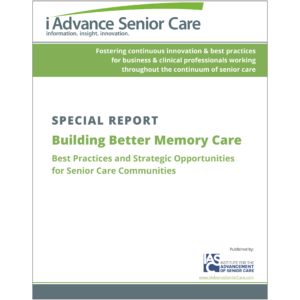Protecting seniors from heat stroke risk
With summer here and the temperatures rising, it is important to understand the health risks that excessive heat can bring and know the signs of heat-related illnesses. Older adults and people with chronic medical conditions are particularly susceptible to hyperthermia and other heat-related illnesses. The National Institute on Aging (NIA), part of the National Institutes of Health, offers advice to help combat the dangers of hot weather.
Heat stress, heat fatigue, heat syncope (sudden dizziness after exercising in the heat), heat cramps and heat exhaustion are all forms of hyperthermia. Hyperthermia is caused by a failure of the body’s heat-regulating mechanisms. The risk of hyperthermia can increase with the combination of higher temperatures, underlying general health, and individual lifestyle.
Lifestyle factors that can increase risk include not drinking enough fluids, living in housing without air conditioning, lack of mobility and access to transportation, overdressing, visiting overcrowded places and not understanding how to respond to hot weather conditions.
On hot and humid days, especially when an air pollution alert is in effect, older adults, particularly those with chronic medical conditions, should stay indoors in cooler places. If possible, people without air conditioners or fans should go to places that do have air conditioning, such as senior centers, shopping malls, movie theaters and libraries. Cooling centers, which may be set up by local public health agencies, religious groups and social service organizations in many communities, are another option.
Many factors can increase risk for hyperthermia, including:
- Dehydration
- Alcohol use
- Reduced sweating caused by medications such as diuretics, sedatives, tranquilizers and certain heart and blood pressure drugs
- High blood pressure or other health conditions that require changes in diet. People on salt-restricted diets may be at increased risk; however, salt pills should not be used without first consulting a doctor.
- Use of multiple medications. It is important, however, to continue to take prescribed medication and discuss possible problems with a physician.
- Age-related changes to the skin such as poor blood circulation and inefficient sweat production
- Heart, lung and kidney diseases, as well as any illness that causes general weakness or fever
- Being substantially overweight or underweight
Heat stroke is a life-threatening form of hyperthermia. It occurs when the body is overwhelmed by heat and unable to control its temperature. Signs and symptoms of heat stroke include a significant increase in body temperature (generally above 104 degrees Fahrenheit), changes in mental status (like confusion or combativeness), strong rapid pulse, lack of sweating, dry flushed skin, feeling faint, staggering or coma. Emergency medical attention is critical for a person with heat stroke symptoms, especially an older adult.
If you suspect that someone is suffering from a heat-related illness:
- Call 911 if you suspect heat stroke.
- Get the person out of the heat and into a shady, air-conditioned or other cool place. Urge them to lie down.
- If the person can swallow safely, offer fluids such as water, fruit and vegetable juices, but not alcohol or caffeine.
- Apply a cold, wet cloth to the wrists, neck, armpits, and groin. These are places where blood passes close to the surface of the skin, and the cold cloths can help cool the blood.
- Encourage the individual to shower, bathe or sponge off with cool water if it is safe to do so.
The NIA’s AgePage on hyperthermia in English or in Spanish contains additional information and resources. It can be viewed online at https://www.nia.nih.gov/health/publication/agepages.
I Advance Senior Care is the industry-leading source for practical, in-depth, business-building, and resident care information for owners, executives, administrators, and directors of nursing at assisted living communities, skilled nursing facilities, post-acute facilities, and continuing care retirement communities. The I Advance Senior Care editorial team and industry experts provide market analysis, strategic direction, policy commentary, clinical best-practices, business management, and technology breakthroughs.
I Advance Senior Care is part of the Institute for the Advancement of Senior Care and published by Plain-English Health Care.
Related Articles
Topics: Articles











